
1/13 Spectacular “Plumes” necklace featuring 15 Australian black opals (93.14 cts), accented by blue and purple sapphires, tsavorites, black diamonds, and Tahitian pearls in 18K gold by Alessio Boschi. (Photo: Alessio Boschi)
Unique, variable, distinctive, colourful, fiery, vibrant… The words used to describe opal hardly do it justice.
The Roman scholar Pliny observed in 79 AD, “Some opali carry such a play within them that they equal the deepest and richest colours of painters.”
Popular around the world, it was called úpala in Sanskrit meaning “precious stone”, and opalus in Latin and Opallios in Greek, both meaning “colour change”. The earliest known artifacts of opal were found in a cave in Kenya by famed anthropologist, Louis Leakey. Thought to date back to 4000 BCE, they were probably of Ethiopian origin.
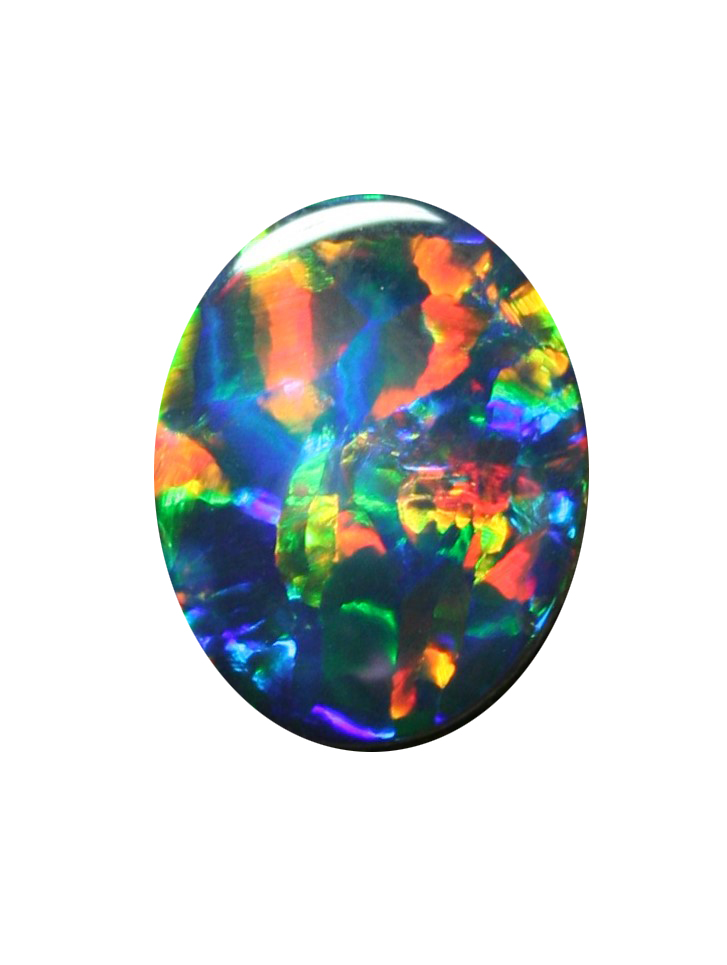
2/13 Lightning Ridge black opal featuring a rainbow of colours. (Photo courtesy of Anthony Smallwood)
A hydrated amorphous form of silica, opal has the chemical formula SiO2·nH2O, where “n” indicates a variable water content. In “Precious Opal”, the internal structure is composed of tiny transparent or translucent silica spheres, arranged in an orderly structure. When light passes through them, it is diffracted into separate colours, thus giving the appearance of surface scintillation.
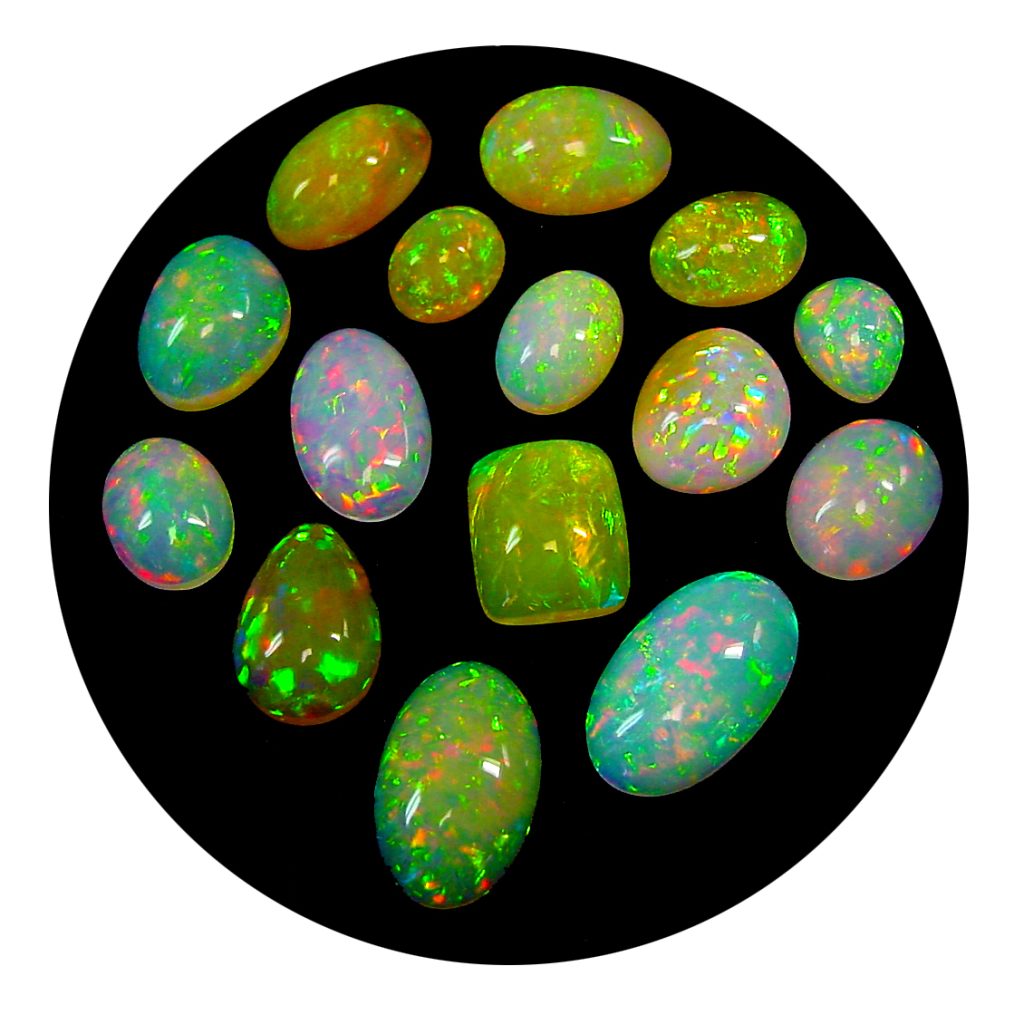
3/13 Selection of Ethiopian opals from Commercial Mineral. (Photo: Mike Romanella)
In “Common Opal”, the silica spheres are either too disordered or too compact to allow the lightto refract a variety of colours. The gem may be opaque, transparent, or translucent depending on the conditions of its formation. The background may be almost any colour, white, or black, with black the rarest.
Over the centuries, opal’s popularity has waxed and waned, from a symbol of luck, purity, truth, and protection in the Middle Ages to having a less auspicious status in the 19th century to even being associated with bad luck in the early 20th century. Yet, today, the popularity of this beautiful gem has never been more positive or widespread. It is mined around the world, from North and South America to Africa, from Europe to Asia, and Australia.
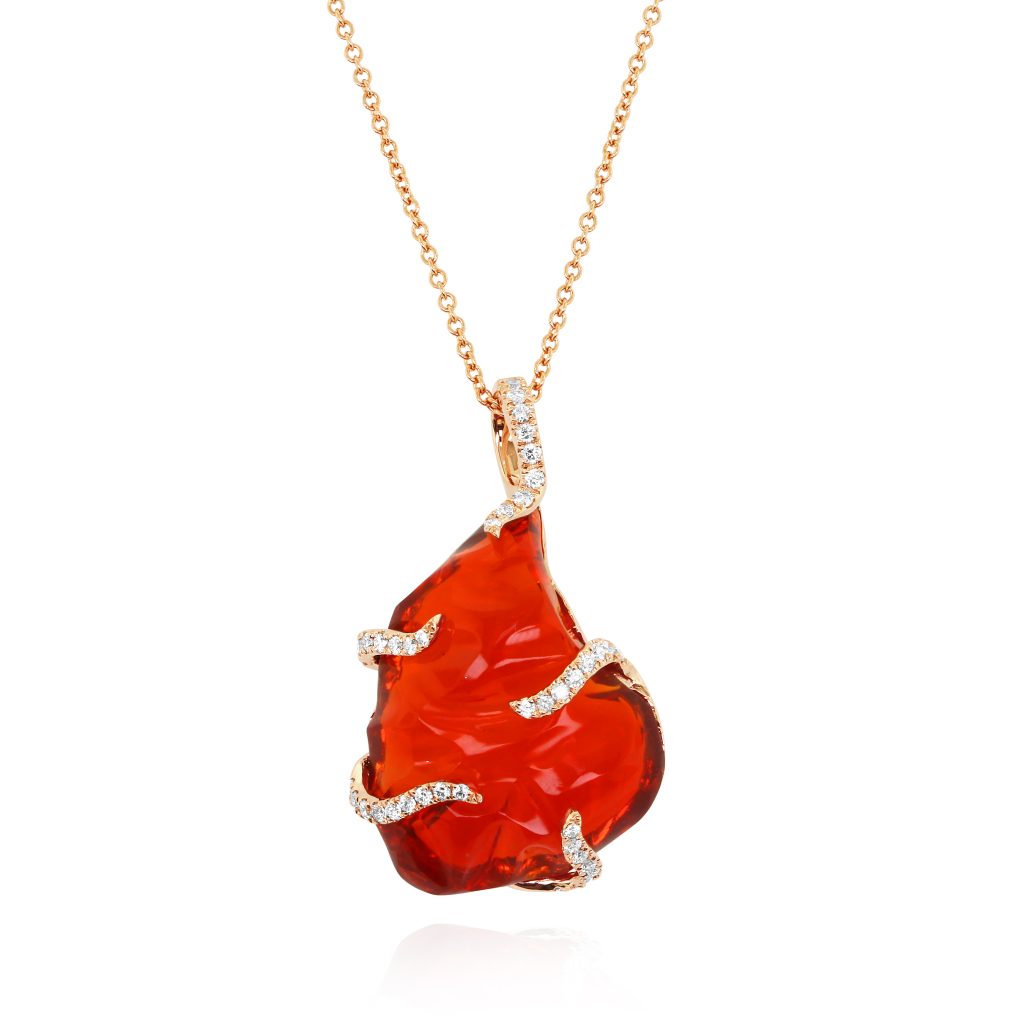
4/13 Free-form Mexican fire opal pendant with diamonds set in 18K gold by Yael Designs. (Photo: Yael Designs)
Mexico is the main source for fire opal, aptly named for its fiery colour. “Fire opal is one of our bestselling gemstones,” comments Yehouda Saketkhou, founder and designer of California-based Yael Designs. “Customers especially like the free-form designs.” He notes that the finest quality fire opal is becoming difficult to find, as a result demand and prices are rising.
In 2008, important opal deposits were found in Ethiopia, and these “Welo” opals now occupy a major position in the global market. Of volcanic origin, they come in both precious and common types, along with intermixing of both. Many are white to light yellowor translucent with a rainbow of body colours, but it also comes in black witha kaleidoscope of colours. Ethiopianopals are also hydrophane, meaningthey are porous and absorbwater (unlike Australian opal).
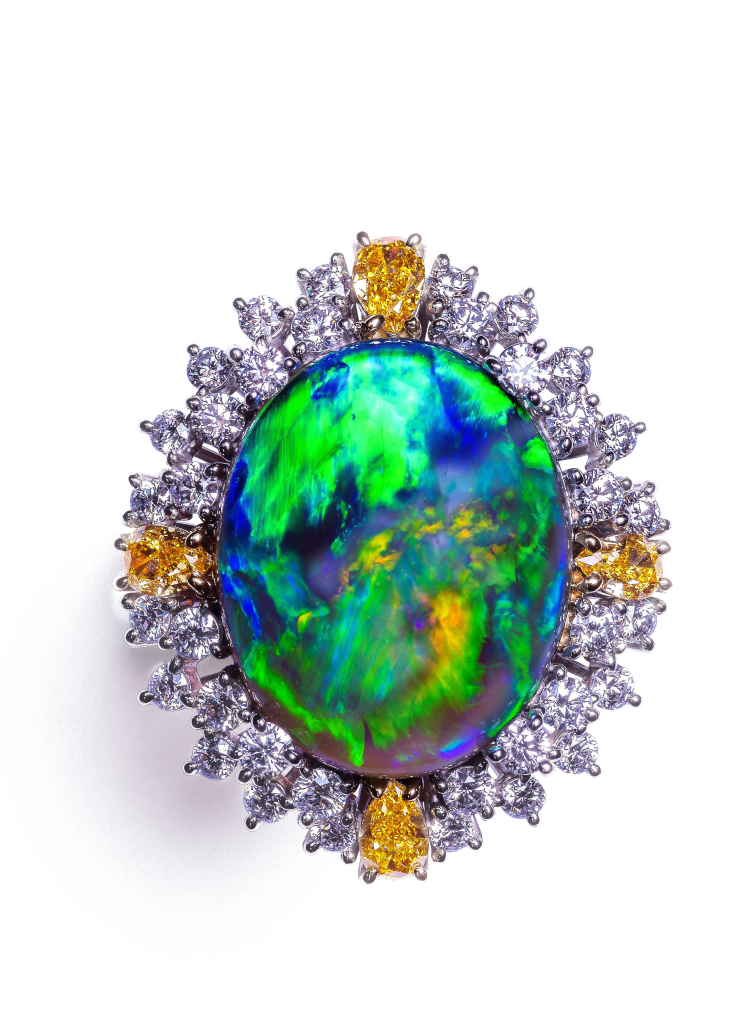
5/13 Ring designed by Bruce Harding, featuring an Australian black opal surrounded by white and yellow diamonds in 18K gold. (Photo: Dreamtime)
“When Ethiopian opalfirst came on the scene,”comments Joel Price of California-based Joel PriceInc., whose family has beenmining and cutting Australianopals since the 1970s, “it wasa double-edged sword forAustralian opal. Because it boosted eyes on all opals, it was good for Australian black and boulder opal sales, but notso good for dealers of white opal.”
Australia remains, however, the world’s largest supplier of opal, and the gemis the country’s National Gem. The primary types are black opal from Lightning Ridge; boulder opal mainly from Quіlріе, Yowah, Winton; and crystal and white opal mostly from Coober Pedy, Andamooka, and Mintabie in South Australia. Each type has its own characteristics, its own admirers, and highly variable prices, with black often considered the most precious.

6/13 Opal studs (7x5mm) set in gold by Ikecho. (Photo: Ikecho)
“The Australian opal industry is fairly small and conducted by individual miners,” explains Anthony Smallwood, opal appraiser and publisher of “www.Opal. Academy”. Also describing it as mostly family-run businesses, Matt Hopkins of Rhode Island-based (USA) Hopkins Opal, whose family is in Australia, comments, “It’s a small community. We all know each other, and this industry has always been about ethical sourcing, making the gem even more appealing”.
Dealing mostly with Lightning Ridge stones, he adds that demand has gone up in the USAas people realise the gem’s uniqueness and rarity, as well as being responsibly sourced. Salma Patel, co-founder of QLD-based True Blue Opals & Gems, adds that the Australian opal industry follows strict standards in terms of sustainability, working conditions, and environmental impact and rehabilitation.
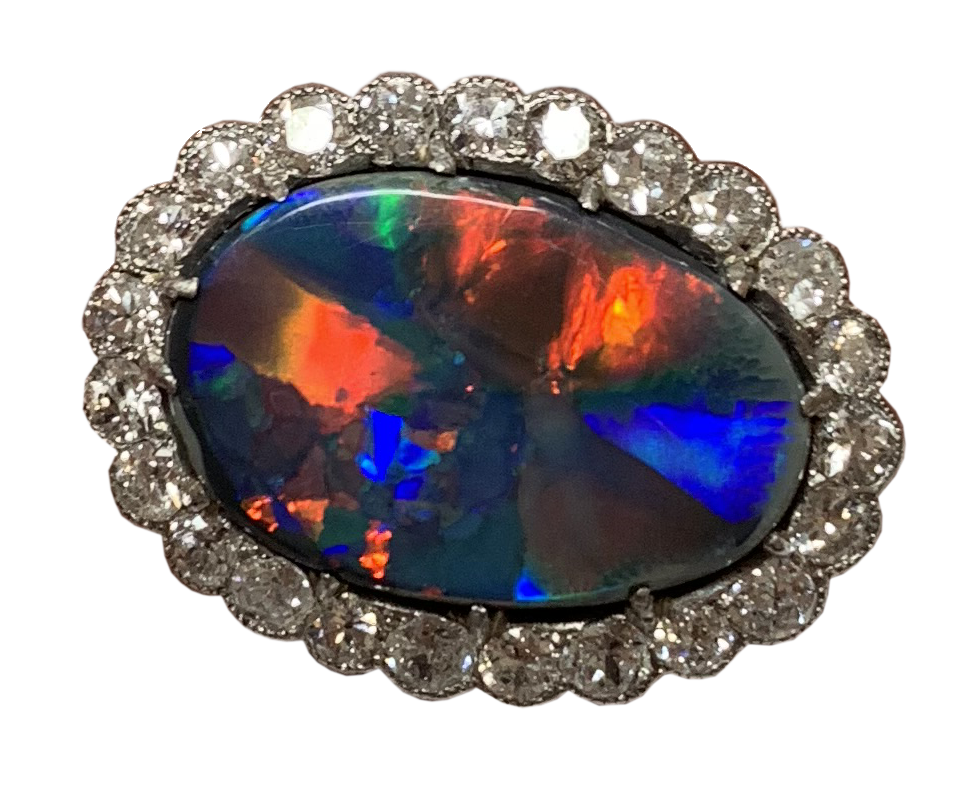
7/13 Australian Black opal mined by Joel Price. (Photo: Joel Price)
“The nature of the land is respected,” she declares.
Bruce Harding originally hails from Australia and now lives in Japan where he is CEO and designer of Dreamtime, specialising in opal jewellery. “I only use Australian opal as it is the best,” he insists, adding that he uses mostly black and boulder opal and that demand and prices are on the rise. Because each stone is unique, he makes every design uniqueso that the client has something no one else has.
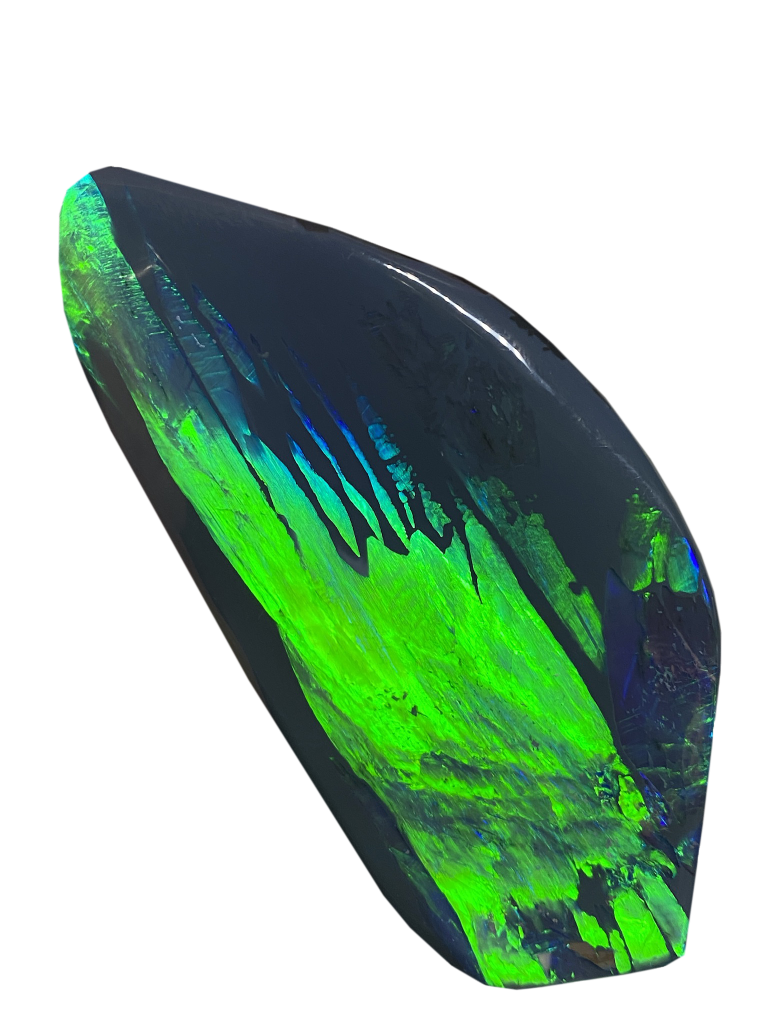
8/13 Opal has been used in jewellery for centuries. This black opal and diamond ring is from the Belle Epoque period. (Photo: Gemolithos)
Italian designer Alessio Boschi uses opal in many of his creations in dramatic ways. “Opal is a very special stone. Its incomparable qualities lend itself to a plethora of designs,” he notes, addingthat it appeals to his international clientele.

9/13 An Australian opal and diamond pendant designed by John Iskenderian. (Photo: John Iskenderian)
While opal is highly treasured around the world, nowhere is it more appreciated than in Australia. Erica Miller, director of Sydney-based Ikecho, says that Australians are interested in, and buying, fine opal jewellery. Selling mostly to local jewellery stores, she says, “I think the Opal Hunters TV show played a significant part in this appreciation.”
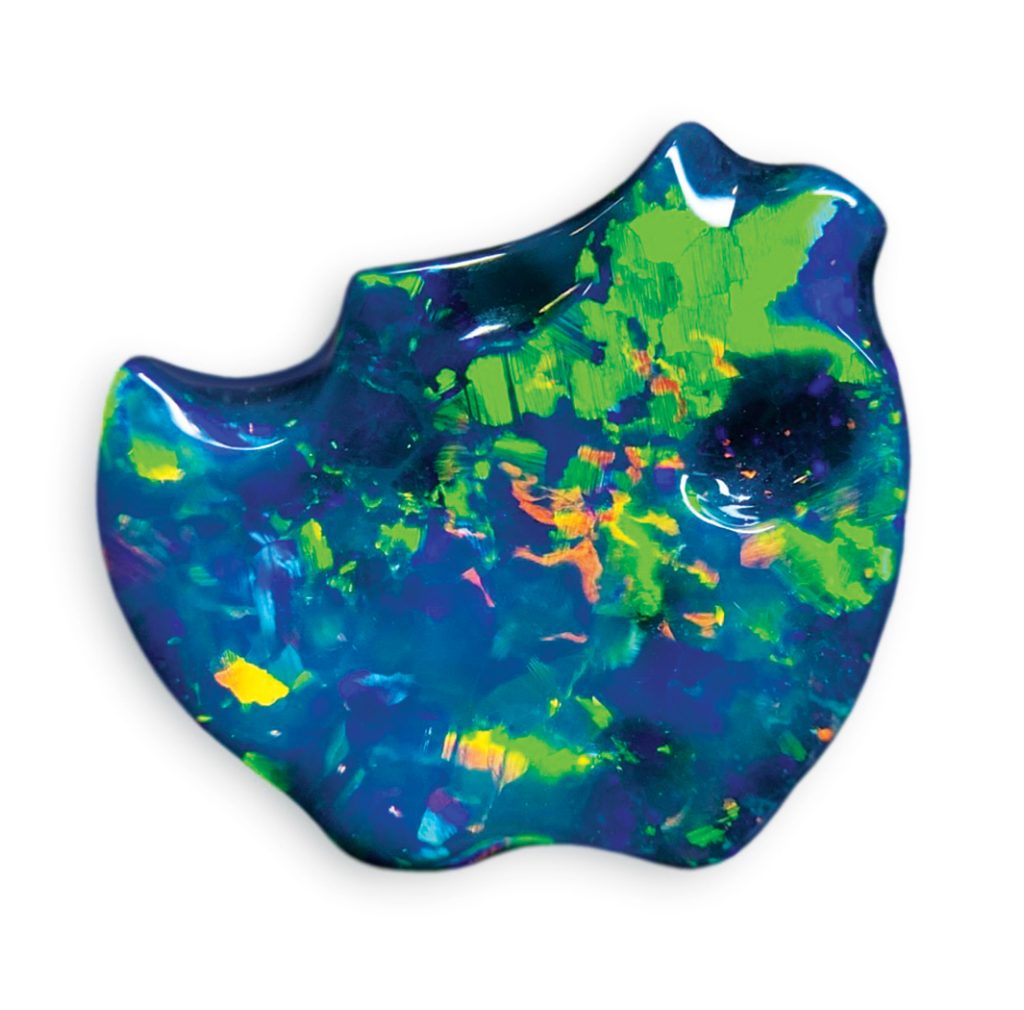
10/13 Example of freeform carved 14.06-ct black opal from Lightning Ridge by Hopkins Opal. (Photo: Matt Hopkins)
Peter Sherman, of Sydney-based Sherman Opals agrees that opal is extremely popular in Australia and around the world, partly because of the Opal Hunters TV show, and partly because of the number of local “Aussie” tourists visiting their own country because of the global Covid lockdowns. “The future looks rosy for opal,” he says.
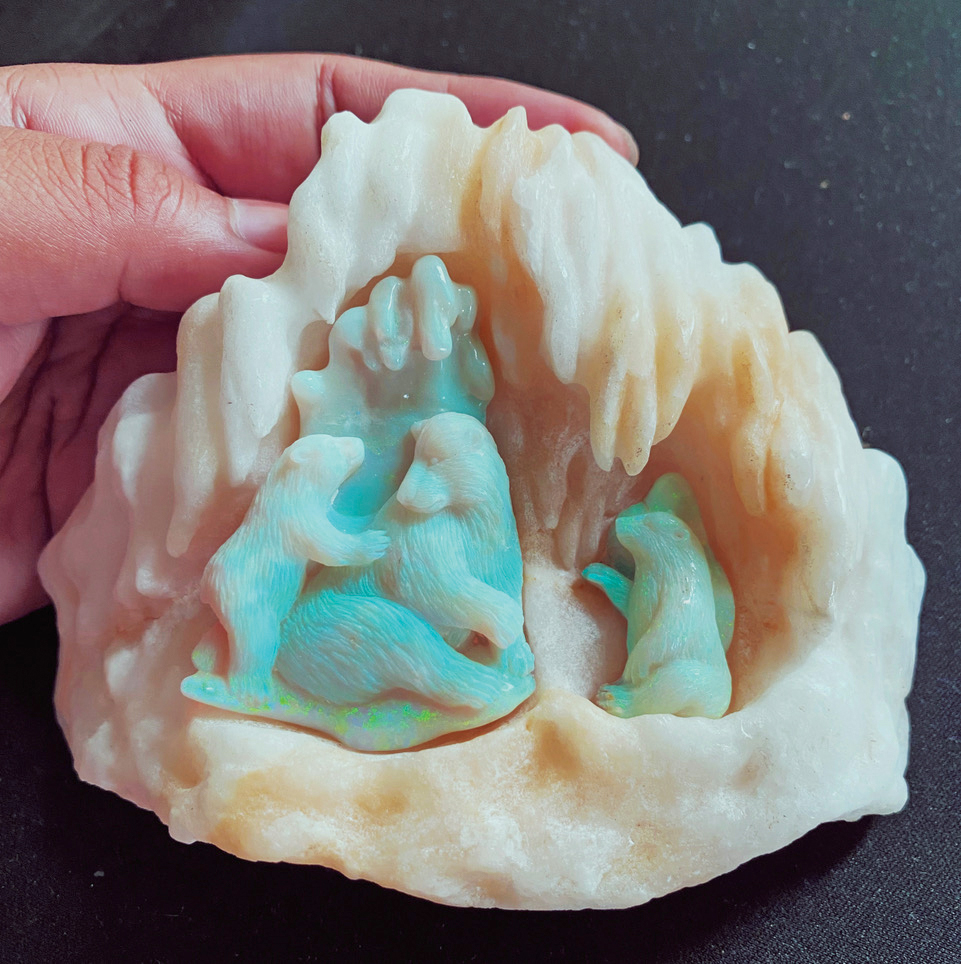
11/13 Carvings are new opportunities for opal, either set in jewellery or as small objets d’art. This family of polar bears is carved in Coober Pedy
light opal set in a glacial cave of white rock by Intogems. (Photo: Terry Coldham)
John Iskenderian is also passionate about opal. Using extraordinary gems, this accomplished designer has been creating one-of-a-kind rainbow-colored jewels for nearly half a century in his beloved Australia. He was even instrumental in starting the trend of “free-form opals”, featuring them in designs that won him numerous local and global awards.

12/13 Opalised fossils are found throughout Australia’s opal fields and are both rare and of great scientific value. This Plesiosaur tooth found in Lightning Ridge is in the Australian Opal Centre collection. (Photo: Robert A. Smith)
Colourful opals are exquisite, regardless of origin. Aside from jewellery, they lend themselves tothe growing handicraft of carving, with some artists gaining international fame. The designs may be freeform or depict a particular subject. Terry Coldham, CEO of Sydney-based Intogems, specialises in opal carvings, explaining that they add a layer of artistry to the gem.

13/13 “Persian Cobalt” necklace featuring 24.40 carats of mixed opals, accented by white and yellow diamonds, demantoid garnet, purple sapphire, and keshi pearls in 18K gold.
Among the rarest opals found in Australia are opalised fossils from the famous opal fields of Lightning Ridge, White Cliffs, Andamooka, Coober Pedy, and the Queensland boulder opal fields. Some of these specimens include teeth, bones, shells, pinecones, and animal remains from the age of the dinosaurs. A remarkable collection of fossilised opals can be found in the Australian Opal Centre (australianopalcentre.com) in Lightning Ridge.
Read below for related stories: